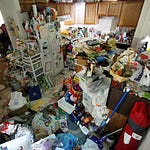International MS Day
Today’s MS-Selfie Newsletter is to commemorate International MS Day (30 May). The theme this year is ‘connections’. MS Connections is about building community connections, self-connection and connections to quality care.
Social isolation and loneliness
I have finally started reading ‘The Journal of a Disappointed Man’ by WNP Barbellion. It was recommended to me more than a decade ago. It is a remarkable read and tells you first-hand how bad multiple sclerosis can be if left to its own devices. It is a story of decline and failed ambition, not for lack of trying but because of the unpredictable impact of MS, its symptoms and the inevitable physical and mental decline.
“Suffering does not only insulate. It drops its victim in an ocean desert where he sees men as distant ships passing. I not only feel alone, but very far away from you all.” ― W.N.P. Barbellion
Below that final entry, “Self-disgust”, his journal declares that Barbellion died two months later, on 31 December 1917. Barbellion is the pseudonym of Bruce Cummings, who lived for another two years and died in October 1919, aged 30. If you have MS, the journal will be a challenging read.
Multiple sclerosis is one of those diseases that is very isolating. MS shreds relationships, impacts physical and cognitive functions, is associated with fatigue, depression and anxiety and often leaves you feeling lonely and isolated. Social isolation and loneliness (SIL) could be defined as diseases, or at least ‘social diseases’. They are associated with worse outcomes and premature mortality across many medical specialities. Social isolation and loneliness are biological stressors and activate a stress response, which has downstream consequences.
Social isolation and loneliness are strongly associated with mental health problems and impact healthcare, costing medical insurance companies and governments money. This is why governments are exploring different policies to tackle SIL at a population level. This is particularly relevant in countries that have abandoned the extended family for the nuclear family and have rapidly ageing populations. Living in a culture with extended families, Social isolation and loneliness are less of a problem. In the UK and other modern ‘Westernised’ countries, we now have many people living alone in old age who are lonely and socially isolated. It will be interesting to see which new social policies will impact SIL. It is a great pity that modern societies have abandoned the extended family; we now rely on the state rather than our families to look after us in old age.
As set out in the 2018 loneliness strategy, there are three overarching objectives which guide the UK government’s work on loneliness:
To reduce the stigma of SIL by starting and building a national conversation on loneliness so that people feel able to talk about loneliness and reach out for help.
To drive a lasting shift so that relationships and loneliness are considered in policy-making and delivery by organisations across society, supporting and amplifying the impact of organisations connecting people.
To play a part in improving the evidence base on loneliness, make a compelling case for action, and ensure everyone has the information they need to make informed decisions through challenging times.
As an HCP, we can’t undiagnose or even soften the diagnosis of MS. As MS treatments become more effective, the stigma associated with having MS will lessen. Therefore to counteract SIL HCPs need to manage MS proactively and holistically. As part of the holistic management of MS HCPs need to identify SIL and manage it as we would do any other MS-related symptom. If you are reading this and have MS, you need to ask yourself, “Am I socially isolated and/or lonely?”. Researchers have developed scales to measure or quantify social isolation and loneliness as with all medical symptoms.
I don’t want to burden you with yet another metric or scale. I am sure you are as tired as I am with all the apps, wearable devices and other metrics available to measure and quantify life, particularly a life with MS. However, knowing these scales may nudge you to reflect on social isolation and loneliness.
For social isolation, I have included the Lubben Social Network Scale. This scale is a self-reported measure of social engagement with family and friends. There are two versions of this scale a short, 6-item scale and a longer, 12-item scale. The UCLA loneliness scale is a 20-item scale to measure one’s subjective feelings of loneliness and social isolation.
Lubben 12-item social network scale
FAMILY: Considering the people to whom you are related by birth, marriage, adoption, etc…
1. How many relatives do you see or hear from at least once a month?
2. How often do you see or hear from the relative with whom you have the most contact?
3. How many relatives do you feel at ease with that you can talk about private matters?
4. How many relatives do you feel close to such that you could call on them for help?
5. When one of your relatives has an important decision to make, how often do they talk to you about it? 6. How often is one of your relatives available for you to talk to when you have an important decision to make?
FRIENDSHIPS: Considering all of your friends, including those who live in your neighbourhood…
7. How many of your friends do you see or hear from at least once a month?
8. How often do you see or hear from the friend with whom you have the most contact?
9. How many friends do you feel at ease with that you can talk about private matters?
10. How many friends do you feel close to such that you could call on them for help?
11. When one of your friends has an important decision to make, how often do they talk to you about it? 12. How often is one of your friends available for you to talk to when you have an important decision to
Each question is rated from zero to 5 based on the frequency of the interactions.
0 = none, 1 = one, 2 = two, 3 = three or four, 4 = five thru eight, 5 = nine or more
The total score is calculated by the sum of all items. The score ranges between 0 and 60, with a higher score indicating more social engagement.
UCLA loneliness scale
You need to rate each item as either O (“I often feel this way”), S (“I sometimes feel this way”), R (“I rarely feel this way”), N (“I never feel this way”).
Indicate how often each of the statements below is descriptive of you.
1. I am unhappy doing so many things alone O S R N
2. I have nobody to talk to O S R N
3. I cannot tolerate being so alone O S R N
4. I lack companionship O S R N
5. I feel as if nobody really understands me O S R N
6. I find myself waiting for people to call, text, message or write O S R N
7. There is no one I can turn to O S R N
8. I am no longer close to anyone O S R N
9. My interests and ideas are not shared by those around me O S R N
10. I feel left out O S R N
11. I feel completely alone O S R N
12. I am unable to reach out and communicate with those around me O S R N
13. My social relationships are superficial O S R N
14. I feel starved for company O S R N
15. No one really knows me well O S R N
16. I feel isolated from others O S R N
17. I am unhappy being so withdrawn O S R N
18. It is difficult for me to make friends O S R N
19. I feel shut out and excluded by others O S R N
20. People are around me but not with me O S R N
Scoring: Make all O’s =3, all S’s =2, all R’s =1, and all N’s =0.
Prof G’s opinion
I have no issue with recognising social isolation and loneliness and using the scales above to try and quantify the problem. But do pwMS who are identified by using these scales as socially isolated or lonely need an intervention? Some people choose to be alone and deliberately isolate themselves. I sometimes enjoy being home alone; I know people who always like living that way. Therefore it may be wrong to assume that all people who score low on these scales have a problem that needs addressing. However, pwMS should be encouraged to self-identify whether their loneliness and/or social isolation is problematic. Do you agree? Or am I wrong?
If you are socially isolated or lonely, please inform your HCP of this and ask if they can help. Therein lies a potential problem. Most HCPs who work in secondary or tertiary medical centres don’t necessarily have the skills or resources to manage loneliness and/or social isolation. Primary care (GPs or family doctors), psychiatry, and care of the elderly (geriatrics) have referral pathways and services to address these problems. However, not having direct access to services doesn’t mean your HCP can’t highlight the issue and signpost you to the relevant services.
If you are an HCP reading this newsletter and want more information, I would suggest reading the recent perspective published in the NEJM (Holt-Lunstad and Perissinotto. Social Isolation and Loneliness as Medical Issues. N Engl J Med. 2023 Jan 19;388(3):193-195.). There is not much MS-specific research and guidance on SIL. I suspect this will change as part of different governments and the WHO’s push to tackle the problem at national and international levels. It looks as if ring-fenced money will be made available for research into SIL and how to manage it more effectively.
The NHS has identified loneliness as a modifiable social determinant of health, and a budget is allocated for social prescribing to treat the problem. At present, the social prescribing budget is community-based. At Barts-MS, we have contacted the social prescribing network in Hackney, and they have kindly agreed to receive direct referrals from our team. In the future social prescribing should be one of the NHS services that should allow self-referrals. This would make sense as part of the push to get people with chronic diseases to self-manage their MS.
So what is social prescribing?
Social prescribing is the formal process by which HCPs, typically primary care physicians, either directly or indirectly link patients with non-medical interventions which aim to reduce the burden of healthcare problems. This could include reading, exercise, sports, music, art, crafts, film and gardening clubs, and reconnecting with the church, to name the obvious ones. Social providers of the activities have to be approved providers to receive payment. In reality, it is not the specific activity that matters, but the fact they are group activities that allow people to meet and socialise with other people and improve their physical and/or mental health. I have started recommending social prescribing to many patients with mixed results. Many are reluctant to engage, whereas others have found it helpful. With time social prescribing becomes the norm. I am aware that many MS communities, both physical and online, exist for the reasons discussed above.
I am not a card-carrying philosopher or social scientist, but the issue of loneliness and social isolation needs serious attention and thought. I am assuming it is a problem, but I may be wrong. Do we need to identify it in clinical practice? Is the HCP the best person to screen and identify the problem? Should the MS specialist MS team be responsible for identifying and managing social isolation and/or loneliness? What can you do to look after your social health and wellness?
Social isolation and loneliness are other hidden symptoms of MS. Is SIL another elephant in the room that we are too scared to discuss?
If you are new to MS-Selfie, I would urge you to read the following newsletters that discuss some of these issues in a different context.
War: a forgotten social determinant of Health (14-March-2022)
Peer-2-peer healthcare: are we ready for a revolution? (30-Oct-2021)
Subscriptions and donations
Paid subscriptions to MS-Selfie are being used to administer the Newsletter and associated MS-Selfie microsite, which is now open to all readers. At the request of several readers, I have now added the option of making a one-off donation. To keep this initiative open to all readers, I would appreciate it if those who can afford a subscription to subscribe. For active paying subscribers, thank you; your contribution is much appreciated. Because of the falloff in paying subscribers, I am considering returning to a paywall that will give paying subscribers six months of unlimited access to all newsletters. At the same time, free subscribers will have a wait to access the newsletters later, not as an email, but on the substack site.
General Disclaimer: Please note that the opinions expressed here are those of Professor Giovannoni and do not necessarily reflect the positions of Barts and The London School of Medicine and Dentistry nor Barts Health NHS Trust. The advice is intended as general and should not be interpreted as personal clinical advice. If you have problems, please tell your own healthcare professional, who will be able to help you.















Share this post